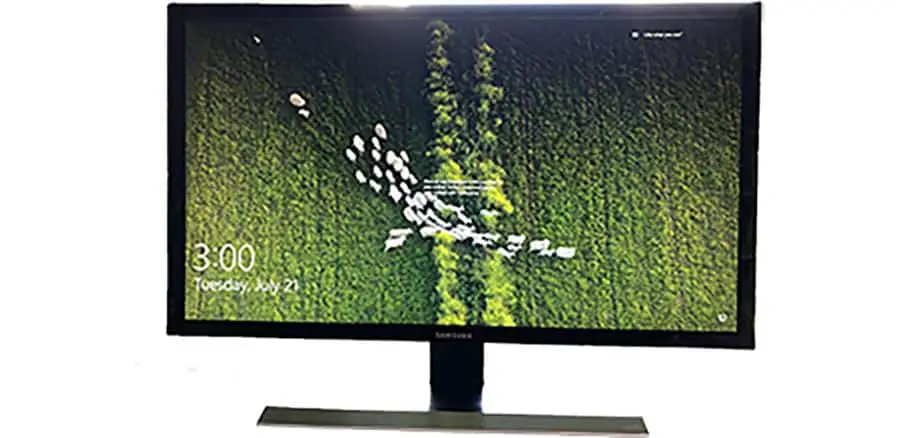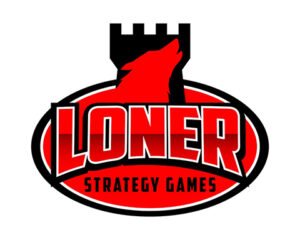
Okay, so you’ve decided to get the gaming monitor you’ve always dreamed of. What next? Gaming monitors can be pretty expensive, so if you’re like me, you want to know what’s the best one for you. In gaming monitors size matters, and most of it comes down to personal preference. For the average gamer like me a 28-inch monitor works fine.
I have a model LU28590DS/ZA (UHD) but it’s pretty pricey at around $400, and there are comparable 28-inch models available that are cheaper. My first choice is the cheaper 28-inch monitor from Samsung, model LU28E570DS/ZA (on Amazon if you want to take a look), which is about $140 cheaper, but it comes with a few caveats. I also have a smaller 23-inch monitor that is mentioned later in this article (Or you can jump to it with this link) since a 28-inch monitor is not for everyone nor is it well-suited for every game.
First of all, I have to confess that I’m sold on Samsung monitors. The litmus test for me is to walk into several stores and see what monitors look the best. The ones that always stand out to me are Samsung monitors so that’s what I always buy.
The biggest reason I like this 28-inch monitor is because of its big screen, not only for playing games but also for everyday applications like spreadsheets, you can display a lot more data simply because of the larger screen size.
I did my research though and there are a few valid arguments against getting a screen bigger than 23 inches for gaming, with the two biggest cons being the sheer size of the screen and blurry graphics.
The disadvantage to the larger size of the screen is that you may have to do some “head swiveling” to take in the full scene of the game. Gamers playing First Person Shooters don’t like this, especially in multiplayer games, because by the time you’ve taken everything in, you’re already dead from that guy (or gal) using a smaller screen who can see everything at a glance. I sit about 28 inches from my monitor and there is some “head swiveling,” or at least eye movement from side-to-side in order to take everything in. For a slower paced game like a strategy game that’s not a problem, especially if the game has a pause feature.
The other complaint, blurry graphics and text, is also a valid concern. Since I sit relatively close to my monitor I can read most text based dialog easily and sitting at that distance means I don’t have any problems with blurry graphics either, although sitting any closer does result in some blurring and graininess when game playing. Some games are experimenting with UI scaling, which allows you to increase the size of the user interface, icons and all, to a more readable scale if that’s an issue. I’ve found that to be very useful whenever I decide I want to play games on my 55-inch big screen TV, and I have used it on occasion for the 28-inch monitor. That’s a very nice feature if the game has it.
Screen Size
How big can the monitor be without overpowering your senses? In my opinion anything over 28 inches would be unmanageable unless it’s curved, I imagine I could adjust to a 34-inch screen if it is curved (this is the maximum desktop size recommended by most experts). To me, the ultimate joy is playing a game on as big a screen as I can without going overboard and overpowering my senses, so a 28-inch screen size works perfectly for me.
Response Time
Something else to consider when shopping for a monitor is response times and input lag (there is a difference between the two) since they are important. Response time is the amount of time it takes for monitor pixels to change color, the lower the time the better. A high response time creates the possibility of images blurring on the monitor during movement, such as when playing a first-person shooter (FPS). Response times of 8ms or less are good targets if your main intent is using the monitor for gaming. The Samsung monitor we’re looking at has a response time of 1 ms, the same as the monitor I use, well within the recommended specs.
Input Lag
Input lag is another important factor, especially for FPS games, and most monitor manufacturers don’t even include that in their list of specifications. Basically, input lag is the amount of time it takes for the screen to display any movements you make with a mouse or keyboard. A high lag time will drive you crazy and lead to poor performance in an action game, although, once again, that’s not as important in a strategy game. There are a lot of sites on the Internet that measure input lag although you probably will need to visit more than one to find the particular model you’re interested in.
If you can’t find the input lag for the model you’re interested in look at the refresh rate. If the refresh rate is 60H hz then the input lag will almost certainly be too high for a graphics intense, FPS, multiplayer game.
Most sites recommend an input lag time of 15 milliseconds (ms) or less. The Samsung model we’re looking at has an input lag of 36.1 ms, a much better response time than the 98 ms my current monitor has, but this is definitely not what you’re looking for if you’re an extreme gamer playing an FPS game. For a casual, strategy game player like me the input lag is not an issue. To read more about the 28-inch monitor you can go to this Amazon page.
Refresh Rate
Refresh rate is a measure of how often the monitor updates the images it’s displaying, the higher the refresh rate the more smoothly a game is displayed and the less the input lag. Typically, a refresh rate of 60 hertz is just fine for the average strategy gamer, or even an FPS gamer. You will probably want a higher rate for a larger, curved monitor, plus higher rates will give you better images on a bigger screen. Check your PC or graphics card first though, you may need a hardware upgrade in order to drive that new monitor at that 240 hertz refresh rate you want. The Samsung 28-inch monitor has a refresh rate of 60 hz, the same refresh rate as my current monitor, and once again that works just fine for the average gamer like me.
What About A Curved Monitor?
Like everything else in life curved monitors, especially the ultrawide versions, have their pros and cons when compared to flat screens. If I were buying something larger than a 28-inch monitor for gaming I would buy a 34-inch curved monitor. A curved screen will give you a larger field of view and can make a gaming experience more immersive, plus you have a larger screen to play on, with less head swiveling. A con is the potential for glare, a curved monitor has a better chance of picking up light reflections, so where you put your monitor is important. Also, when viewing the image at an angle, a curved monitor is less forgiving of the angle you look at it versus a flat monitor. You’ll need a more centralized position if you’re using a curved monitor, it’s not a very good option for sharing videos with someone else who might be sitting next to you.
A Cheaper Flat Screen Alternative
If you don’t want a curved monitor or the large 28-inch monitor, which smaller flat panel monitors are worth considering? If I were looking for a new 23-inch monitor to use for a combination of gaming and work usage I would take a look at a Samsung 23.5 inch model SE450. It has a refresh rate of 60 hertz, response time of 5 milliseconds, and has a contrast ratio of 1000:1, more than adequate for gaming and everyday work tasks. Input lag should not be an issue for anyone but the most serious gamer, the refresh rate of 60 hz is an indication of an average input lag that will suffice for any but the most extreme FPS games. You can learn more about it at Amazon.
